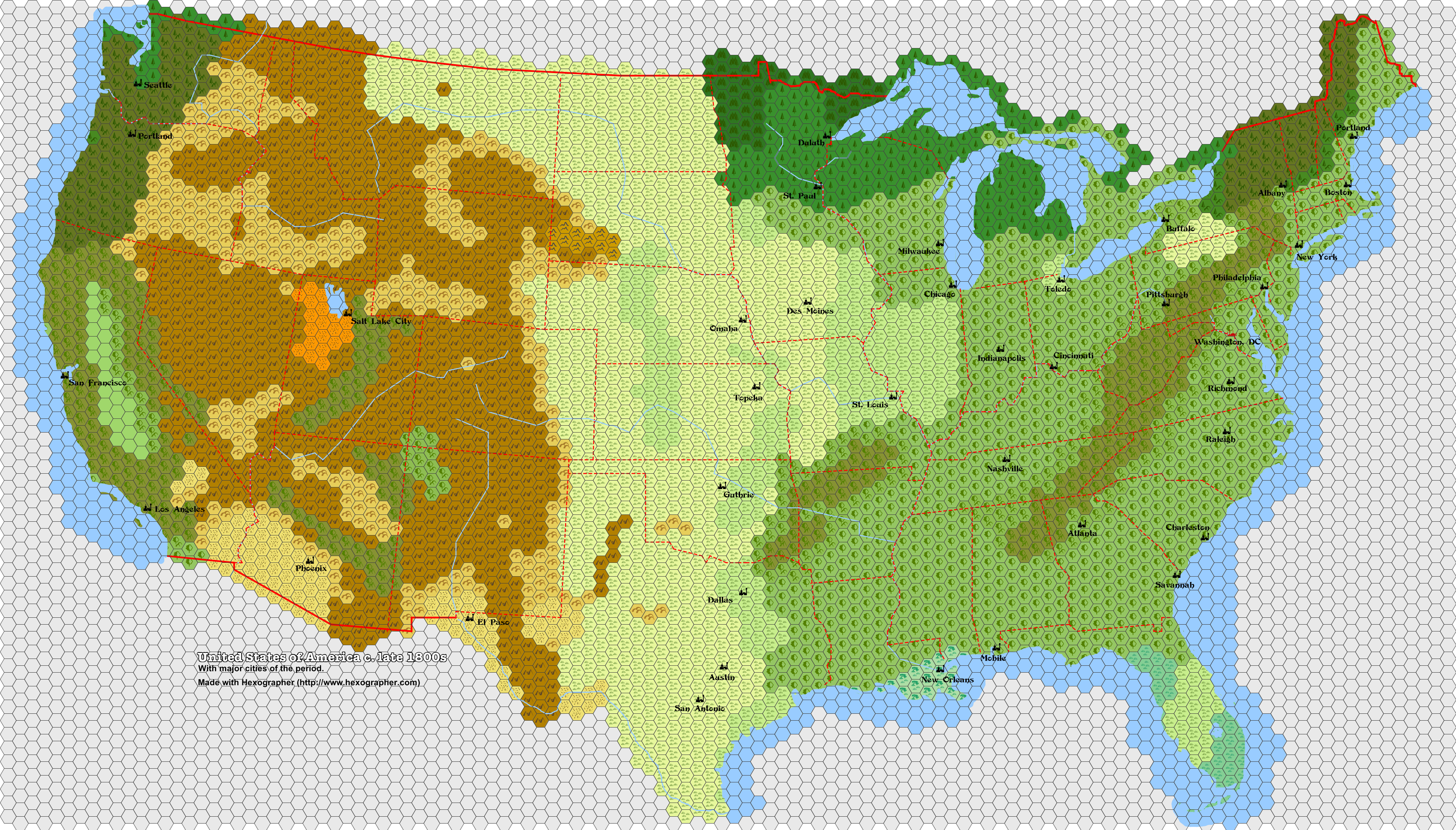@roaminggamer: I was after ideally the heightmap/texture numeric data so I could create my tile maps via the heightmap data.
Think the old D&D maps with he hex tiles, and I could bust out some random terrain from LibNoise, make a fake continent or whatever, and then convert it to tilemap like so:

The robust feature set from LibNoise generates the map and gives the corresponding heightmap info, color (customizable BTW colormaps), repeating texture (tileable) continent for wraparound (Think Sosaria from Exodus: Ultima III) along with a buncha other features.
That’s what I’m after. If I had to have my drothers, I’d go for the heightmap info datasets as a “must have” cause I can code the other stuff.
@adrianm: EXACTLY. But I was kinda sick of ‘faking it’ with perlin noise and other methods of creation. I’ve got sticky particle method of creation going, some basic smoothing/normalizing, but nothing like fault line generation, coastal areas, etc.
I used a C# version of libnoise a while back and it was pretty rad, I came across this implementation which looks like 9/10ths of the way there. Just don’t have the awesomeness to take it that last step of the way. Pooop!! 
-Mario

 Thanks for the tip though! I’m just sick of having to write my own implementations of stuff. I’d like to worry about the actual game and not the plumbing itself for once.
Thanks for the tip though! I’m just sick of having to write my own implementations of stuff. I’d like to worry about the actual game and not the plumbing itself for once. 